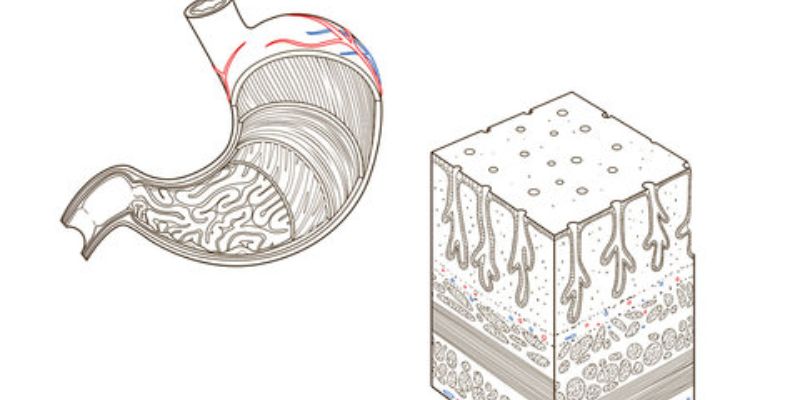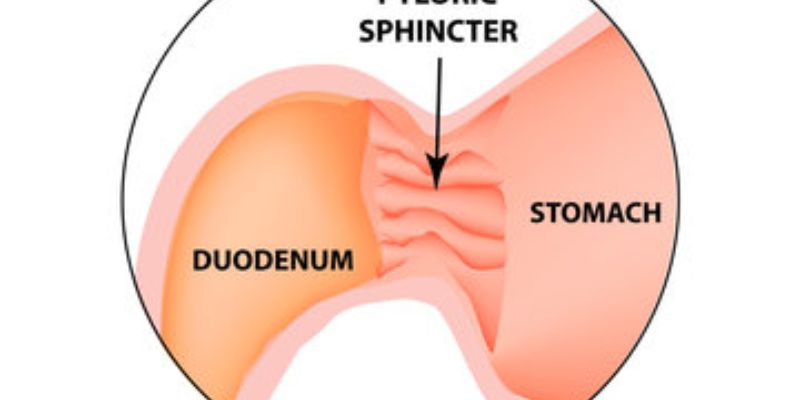Are you curious to learn more about the anatomy and physiology of the human body in 1933? One important organ that often goes overlooked is the sphincter. From its role as a simple barrier between organs to intricate physiological functions, this unsung hero plays an essential role in our bodily processes.
We will dive into what a sphincter is and why it was so significant in 1933. Covering basic and complex facts related to these structures, readers can expect an engaging exploration of how these muscles work to keep us healthy and functional.
What Is A Sphincter

A sphincter is a circular muscle that encircles a bodily opening or tube. It acts like a gatekeeper, allowing substances to pass through only when it contracts and relaxes. The structure of the sphincter can vary depending on its function and location in the body.
For example, the anal sphincter has two rings that control the flow of stool, while the esophageal sphincter comprises several muscles that open and close to regulate the passage of food.
In addition to controlling the movement of substances within the body, sphincters are also a part of maintaining homeostasis (the balanced internal environment) and keeping out pathogens. In 1933, the importance of sphincters was beginning to be understood. Research into their role in maintaining health and functioning was still in its early stages.
Physiological Functions Of The Sphincter

The major physiological functions of the sphincter are to prevent reflux (the regurgitation of stomach acid or bile from the stomach back into the esophagus), control incontinence (the inability to control urination or defecation), and prevent food or bacteria from entering the wrong part of the digestive system. In addition, sphincters are thought to play a role in our emotions, as one theory suggests that tightness around certain organs can lead to increased anxiety.
Types of Sphincter
There are three main types of sphincters in the human body:
Gastrointestinal Sphincters
These sphincters control the flow of food and liquid through the digestive system. Examples include the cardiac sphincter, which separates the esophagus from the stomach, and the pyloric sphincter, which controls the passage of partially digested material into the small intestine.
Urinary Sphincters
These two muscles found in the bladder help keep urine from leaving the body until it is ready to be expelled. The two sphincters in the bladder are the internal and external urinary sphincters. The main role of these muscles is to voluntarily control urination.
The autonomic nervous system controls the internal sphincter and helps reduce urine leakage when increased pressure in the bladder, such as during coughing or sneezing.
Anal Sphincters
The anal sphincter comprises two rings of muscle fibers that control the expulsion of waste from the body. These muscles are important for excretion, as they open and close to allow stool to pass while keeping the rest of the digestive system free from contamination.
In 1933, medical professionals began understanding why these sphincters were important in keeping us healthy. They also began exploring potential treatments for issues related to anal sphincter dysfunction, such as fecal incontinence.
Diseases Related to Sphincters
There are several diseases and conditions related to sphincter dysfunction, such as:
Gastroesophageal Reflux Disease (GERD)
This is a condition in which the cardiac sphincter does not close properly, allowing stomach acids to flow back into the esophagus. Symptoms of GERD can range from heartburn and belching to chest pain, hoarseness, and difficulty swallowing.
Treatment often includes lifestyle changes, such as avoiding foods that trigger symptoms and medications that reduce stomach acid production. Some cases may require surgery to repair the sphincter. Left untreated, GERD can lead to more serious health issues such as esophagitis, ulcers, and cancer.
Urinary Incontinence
This occurs when the internal and external urinary sphincters are weakened due to injury or illness, resulting in uncontrollable urine leakage. Common causes include pregnancy, childbirth, menopause, enlarged prostate, neurological conditions such as multiple sclerosis and Parkinson's disease, urinary tract infections, and certain medications.
While treatments are available for urinary incontinence, including medications, certain exercises, and lifestyle changes can also help reduce its severity or prevent it from occurring. Pelvic floor exercises such as kegel exercises help strengthen the urinary sphincter muscles and thus reduce leakage.
Fecal Incontinence
This is a condition in which the anal sphincter muscles are weakened, resulting in the accidental release of stool or gas. Common causes of fecal incontinence include issues related to childbirth and aging and certain medical conditions such as nerve damage, stroke, diabetes, colorectal cancer, and irritable bowel syndrome.
Treatment depends on the underlying cause and can include medications, lifestyle modifications such as eating high-fiber foods, pelvic floor exercises, and in some cases, surgery to repair or replace the anal sphincter muscles.
Anal Fissures
An anal fissure is a tear in the lining of the anus. It is caused by the anal sphincter muscles becoming too tight and thus preventing the anus from stretching enough to allow for normal passage of stool. Symptoms include pain, itching, and bleeding during and after bowel movements.
Treatment typically includes medications and lifestyle changes such as increasing dietary fiber intake and avoiding constipation-causing foods such as dairy products. In some cases, surgery may be necessary.
Rectal Prolapse
This is a condition in which the rectum becomes displaced and protrudes through the anus due to weakened anal sphincter muscles. Symptoms include bleeding, pain, and difficulty controlling bowel movements.
Treatment typically includes lifestyle changes such as increasing dietary fiber intake, avoiding constipation-causing foods such as dairy products, and pelvic floor exercises to help strengthen the anal sphincter muscles. Surgery may sometimes be necessary to repair the weakened muscles and improve their functioning.
Pelvic Organ Prolapse
Pelvic organ prolapse occurs when the tissues that support the organs in the pelvis become weak or stretched out due to age, childbirth, or other medical conditions. This can cause the bladder, uterus, and rectum to drop into the vaginal area, as well as cause leakage of urine and stool.
Treatment typically includes lifestyle modifications such as pelvic floor exercises and avoiding heavy lifting. Surgery may sometimes be necessary to repair the weakened muscles supporting pelvic organs.
Treatment of Diseases Related to Sphincters
The treatment of diseases related to sphincters typically depends on the underlying cause and can include lifestyle modifications, medication, and in some cases, surgery. Pelvic floor exercises such as kegel exercises help strengthen the muscles that support the pelvic organs and help reduce leakage.
Eating a balanced diet with adequate fiber intake will also help reduce sphincter-related symptoms. In some cases, medications such as laxatives or antacids can help reduce symptoms related to GERD or urinary incontinence.
Surgery may be necessary in more severe cases to repair weakened sphincters and, in some cases, to prevent further damage or complications due to the disease.
FAQS
Where is your sphincter located?
Your sphincter is located in your pelvic area, specifically, the muscles surrounding the rectum, and helps control gas and feces' passage. The internal and external urinary sphincters can also be found here.
How do you know if your sphincter is weak?
The most common symptoms of a weak sphincter include leakage of feces or gas, difficulty controlling bowel movements, and pain during defecation. If you experience these symptoms, you should consult your doctor immediately to determine the underlying cause and receive treatment.
How can I improve my sphincter?
The best way to improve your sphincter is to do exercises designed specifically for the muscles in the pelvic area, such as kegel exercises.
Conclusion
Our review of the sphincter's anatomy and function has been enlightening. Not only do we gain a further understanding of how our bodies function as a result, but we also now know how important it is to be mindful of the health of this critical muscular valve. As with any muscle in the body, eating healthy and engaging in regular activity can greatly support better functioning across all systems. Taking a moment to become aware of your anatomy and seek out information to keep yourself healthy is the best thing you could ever do for yourself.

The Role of a Psychiatrist: Real People Who Heal Minds
Oct 07, 2023

Are You Monitoring Blood Pressure At Home? Must Adhere To TheseGuidelines!
Nov 05, 2023

The Truth About Silicone Patches: Can They Really Reduce Wrinkles and Scars Overnight?
Sep 14, 2023

What is a Sphincter
Jul 30, 2023

Narcolepsy: Genetic? Sleep Experts on Inheriting Chronic Disorder
Jan 16, 2023

Salicylic Acid vs. Benzoyl Peroxide: Understanding the Contrast
Oct 30, 2023

Best Insoles for Plantar Fasciitis
Jul 31, 2023

6 Natural Hair Treatment Tips for Hair Growth: An Ultimate Guide
Oct 17, 2023



